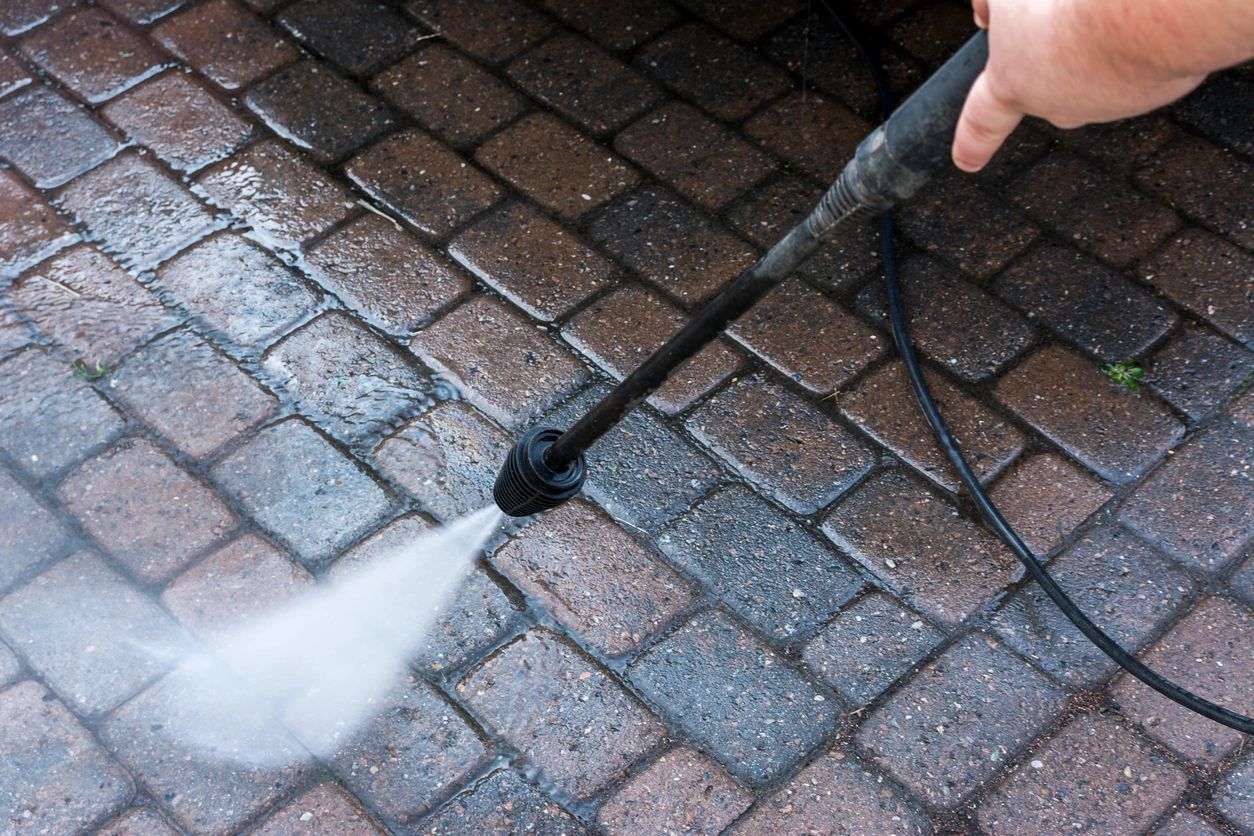Hardscape materials, such as pavers and retaining walls, are an attractive way to transform your yard into a more inviting and comfortable space.
However, keeping these hardscape materials looking their best can be hard work if you’re not familiar with proper care and maintenance.
Luckily, caring for your hardscape materials doesn’t have to take hours of your time every week; by following these tips, you can learn how to make your hardscape materials last even longer and look better than ever!
Regularly sweep and clean your hardscape

Sweeping and/ or blowing your hardscape materials regularly is the easiest way to maintain them. You should sweep your pavers with a dry or slightly damp broom or sweeping brush.
Blowing your pavers is useful because it gets the loose items off. Use the same technique with your block retaining walls and steps, but be sure you use a pressure washer instead of just a broom for tougher stains and dirt.
To clean tough stains, it might take some scrubbing; make sure you use a gentle soap to avoid scratching.
Inspect for any damage and repair as necessary
It’s easy to take your hardscape materials for granted. These include pavers, blocks, and more. You must inspect them periodically and repair any damage as necessary. Pavers should be inspected every few months, while blocks should be checked every year or so.
Protect your hardscape from the elements
To ensure your hardscape materials last as long as possible, make sure they are properly protected from the elements. This will help you maintain a healthy lawn and keep your hardscape looking new for as long as possible.
– Install a drainage system in the yard to prevent water from pooling up around the structures.
– Maintain turf health with consistent watering, fertilizing, and mowing.
Do not use harsh chemicals on your hardscape
Porous materials such as bricks, stone, Travertine, and concrete products are vulnerable to harsh chemicals that can deteriorate their surface. To avoid this problem, try using a water-based sealant when applying a coat of paint or stain. You can also apply non-acidic cleaners to remove dirt and grime without damaging the material.
Paver cleaners and Efflorescence cleaners
Controlling efflorescence in hardscape products is crucial for maintaining the aesthetic and structural integrity of pavers, concrete surfaces, and masonry. Here are key strategies to control efflorescence, with recommendations for cleaning and care:
1. Prevention in Installation
- Use High-Quality Materials: Select hardscape products with lower salt content and low moisture absorption. Premium pavers and concrete products are often treated to reduce the likelihood of efflorescence.
- Ensure Proper Drainage: Ensure the base and sub-base are well-draining. Drainage layers, sand, and gravel can help prevent water from accumulating and pushing salts to the surface.
- Apply a Moisture Barrier: Install a vapor barrier below the hardscape surface to block moisture from moving up through the material, carrying salts. This is helpful with concrete patios, sidewalks, and driveways.
- Proper Compaction: Compacted layers help reduce water infiltration. Ensure each layer of the base and sub-base is adequately compacted before laying pavers or concrete.
2. Efflorescence Cleaning
- Identify the Efflorescence Type: Efflorescence appears as white, chalky deposits on the surface. If it’s mild, brushing might be enough, while heavier buildup may require specialized cleaners.
- Efflorescence Cleaner: Use an efflorescence cleaner specifically formulated for concrete or pavers. These products typically contain mild acids to dissolve and remove the salts. Be sure to follow manufacturer instructions for safety and effectiveness.
- DIY Cleaning Solutions: Mix one part white vinegar with five parts water for a milder, eco-friendly cleaner. This solution can be applied with a soft brush and rinsed thoroughly.
- Pressure Washing: Use a pressure washer with care, avoiding high pressure to prevent damage to the surface. Pressure washing can be effective when combined with an efflorescence cleaner.
3. Ongoing Care and Maintenance
- Seal the Surface: Once cleaned, applying a high-quality sealer specifically designed for outdoor pavers or concrete helps prevent water infiltration. Choose a breathable sealer to allow moisture to escape.
- Routine Cleaning: Regularly sweep or hose down the surface to prevent dirt and salts from settling on it. This practice helps maintain the surface and reduces the chance of efflorescence returning.
- Annual Deep Cleaning: Use a gentle cleaner annually to refresh the surface and remove any lingering salt deposits before they become visible.

4. Expectations
- Efflorescence: Efflorescence is natural and temporary. It usually diminishes over time as salts leach out and wash away, typically within 1–2 years.
- Maintenance Plan: We recommend a maintenance plan that includes periodic cleaning, resealing, and checking for any signs of water infiltration or base instability.
- Product Warranty and Care Recommendations: Most manufacturers warranty their products however they encourage cleaning first.
Recommended Products for Efflorescence Care
- Efflorescence Removers: Brands like Techniseal, SRW, and Prosoco offer effective efflorescence removers for pavers and concrete.
- Sealers: Look for penetrating or breathable film-forming sealers for concrete and pavers.
- Protective Equipment: Use gloves, eye protection, and proper ventilation when working with chemical cleaners or sealers to ensure safety.
By applying effective maintenance practices, you can significantly reduce the occurrence of efflorescence in hardscape installations.

